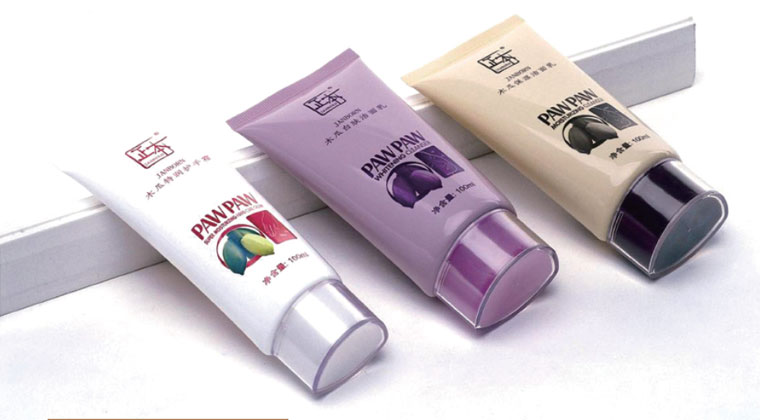Shanghai Redfox Plastic Packaging Inc.
Tube Styles
Tube Process

The first phase of the manufacturing process is extrusion. A mixture of resin and color concentrate is placed into an extruder hopper. The extruder is temperature controlled as the resin is fed through to ensure proper melt of the resin.
The material is extruded through a set of sizing dies that are encapsulated within a right angle cross section attached to the extruder, At this point,the sleeve is water-cooled and ready for cutting. The sleeve is fed through a set of dies at which time is sliced to a given length by a rotating knife.The balance of the manufacturing process can be accomplished in one of three ways.
The most common method is the “downs” process of compression, molding the head onto the tube. In this process, the sleeve is placed on a conveyor that takes it to the heading operation where the shoulder of the head is bound to the body of the tube while, at the same time, the thread is formde.
The sleeve is then placed on a mandrel and transferred down to the slug pick-up station. The hot melt strip or slug is fused onto the end of the sleeve and then transferred onto the mode station. At this point, in one operttion, the angle of the shoulder, the thread and the orifice are molded at the end of the sleeve. The head is then coolde, removed from the mold, and transferred into a pin conveyor.
Two other heading methods are used and found extensively worldwide: injection molding of the head to the sleeve, and an addtional compression molding method whereby a molten donut of resin material is dropped into the mold station instead of the hot melt strip or slug.
The beaded tube is then conveyed to the accumulator. The accumulator is designer to balance the heading and decorating operation. From here, the tube goes to the decorating operation where, with offset pringting, it is decorated with us to six different colors. Inks for the press are premixed and placed in the fountains. At this point, the ink is transferred onto a plate by a series of rollers. the plate then comse in contact wi a rubber blanket, picking us the ink adn transferring it onto the circumference of the tube. The wet ink on the tube is cured by ultra-violet lighe or heat. A similar method is used to apply a protective coating to the tube.
After decorating, a conveyor transfers the tube to the capping sation weher the cap is applide and torqued to the customers’ specifications. The tube is then transferred to a conveyor belt and packed into a tray. The trays are packed into cartons that are sealed and ready for shipment.





